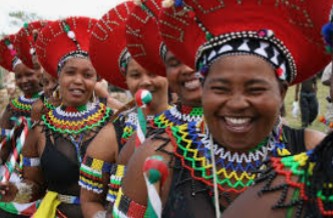
Hair styles and identity in Ancient Egypt
Just by specific hair tie, shape, cut and decoration with different ornaments, age, gender and status are clearly identified. Interesting!
The men of Egypt were usually clean shaven and sported both long and short hair styles. Men wore their hair long while boys had their heads shaved except for a lock of hair above their ear. A male body from a working class cemetery in Hierakonpolis dated around 3500 B.C. had a well trimmed beard. Ancient Egyptians sported curls, braids, waves, twists, wigs and extentions, They dyed their hair and cut it short like U.S. Marines.
Women sometimes wore long things in their hair. A female body from a working class grave dated around 3500 B.C. had evidence of hair coloring (henna was used to color grey hair) and hair weaving (locks of human hair were tied to natural objects to produce an elaborate beehive hairdo). A grave in the worker’s cemetery at Hierakonpolis revealed a woman in her late 40s or early 50s with a Mohawk. Egyptians darkened grey hair with the blood of black animals and added false braids to their own hair. The earliest combs are believed are believed to be fish bones. The earliest man-made combs were discovered in 6000-year-old Egyptian tombs. Some had single rows of teeth. Some had double rows of teeth.

Chopped lettuce and ground-up hedgehog spines were applied to the scalp as a remedy for baldness because baldness was not appreciated. Other cultures have tried everything from camel dung to bear grease to achieve the same result. A male body from a working class cemetery in Hierakonpolis dated around 3500 B.C. had a sheepskin toupee used to hide a bald spot.
Scholars often use hairstyles to date objects and even use them to determine foreign influences. There is evidence of influence from other cultures on the Egyptian hairstyles. One example is the cultural union of the Roman Empire and the Egyptian empire. There is evidence of a female mummy wearing a typically Roman hairstyle yet the iconography on her death mask was plainly Egyptian. At Tell el-Daba in Egypt, there was a statue portrayed wearing a mushroom hairstyle that was typical of Asiatic males. There is a statue of young woman in the Ptolemaic period (304–30 B.C.) exhibiting a typical Nubian hairstyle consisting of five small clumps of hair.

Egyptian men were generally clean-shaven and priests like the one above often shaved their heads. The Egyptians thought that an abundance of facial hair was a sign of uncleanliness and personal neglect. An exception to this was a man’s thin mustache or goatee. There was no soap so an oil or salve was probably used to soften the skin and hairs of the area to be shaved. Tweezers with blunt or sharp ends were used for removing individual facial hairs.
Men and women used to shave their heads bald replacing their natural hair with wigs. Egyptian women did not walk around showing their bald heads, they always wore the wigs. Head shaving had a number of benefits. First, removing their hair made it much more comfortable in the hot Egyptian climate. Second, it was easy to maintain a high degree of cleanliness avoiding danger of lice infestation. In addition, people wore wigs when their natural hair was gone due to old age. However, even though the Egyptians shaved their heads, they did not think the bald look was preferable to having hair. Even Priests were required to keep their entire bodies cleanly shaved. They shaved every third day because they needed to avoid the danger of lice or any other uncleanness to conduct rituals. This is the reason why priests are illustrated bald-headed with no eyebrows or lashes.
Hairstyles and Identity
As for the Egyptians of ths ancient times, hair styles were often express identity, religious position and class. Style and class were just as important after death. For ancient Egyptians, appearance was an important issue. Appearance indicated a person’s status, role in a society or political significance. Egyptian hairstyles and the common hairstyles of today have many things in common. Like modern hairstyles, Egyptian hairstyles varied with age, gender and social status. Children had unique hairstyles in ancient Egypt. Their hair was shaved off or cut short except for a long lock of hair left on the side of the head (side-lock of youth). This s-shaped lock was depicted by the hieroglyphic symbol of a child or youth. Both girls and boys wore this style until the onset of puberty. Young boys often shaved their heads, while young girls wore their hair in plaits or sometimes did up their hair in a ponytail style, hanging down the center of the back. Young girl dancers used to wear long thick braided ponytails. The edge of the tail was either naturally curled or was enhanced to do so. If the ponytail was not curled at the end, it was weighted down by adornments or metal discs.

Egyptian men typically wore their hair short, leaving their ears visible. Men often kept these hairstyles until their hair began to thin with advancing age. Another hairstyle for men was distinctive short curls covering the ears shaping a bend from temple to nape. It is doubtful that this hairstyle was natural. It was more likely a result of a process of hair curling that was done occasionally. More unique were the women’s hairstyles than those of men. Women generally preferred a smooth, close coiffure, a natural wave and long curl. Women in the Old Kingdom preferred to have short cuts or chin length bobs. However, women in the New Kingdom (around 1550–1070 B.C.) wore their hair long or touted a wig. Women tied and decorated their hair with flowers and linen ribbons. A stylized lotus blossom was the preferred adornment for the head. This developed into using coronets and diadems. Diadems made of gold, turquoise, garnet, and malachite beads were discovered on an ancient Egyptian body dating to 3200 B.C.
Poorer people used more simple and inexpensive ornaments of petals and berries to hold their hair at the back. Children decorated their hair with amulets of small fish, presumably to protect from the dangers of the Nile. Children sometimes used hair-rings or clasps. Egyptians also wore headbands around their heads or held their hair in place with ivory and metal hairpins. Beads might be used to attach wigs or hair extensions in place. Slaves and servants were not able to dress the same as Egyptian nobility. The way that they adorned their hair was quite different. Commonly, they tied their hair at the back of the head into a kind of loop. They can also tie it in eight or nine long plaits at the back of the head and to dangled them together at one side of the neck and face. So, just by specific hair tie, shape, cut and decoration with different ornaments, age, gender and status are clearly identified. Interesting!




































